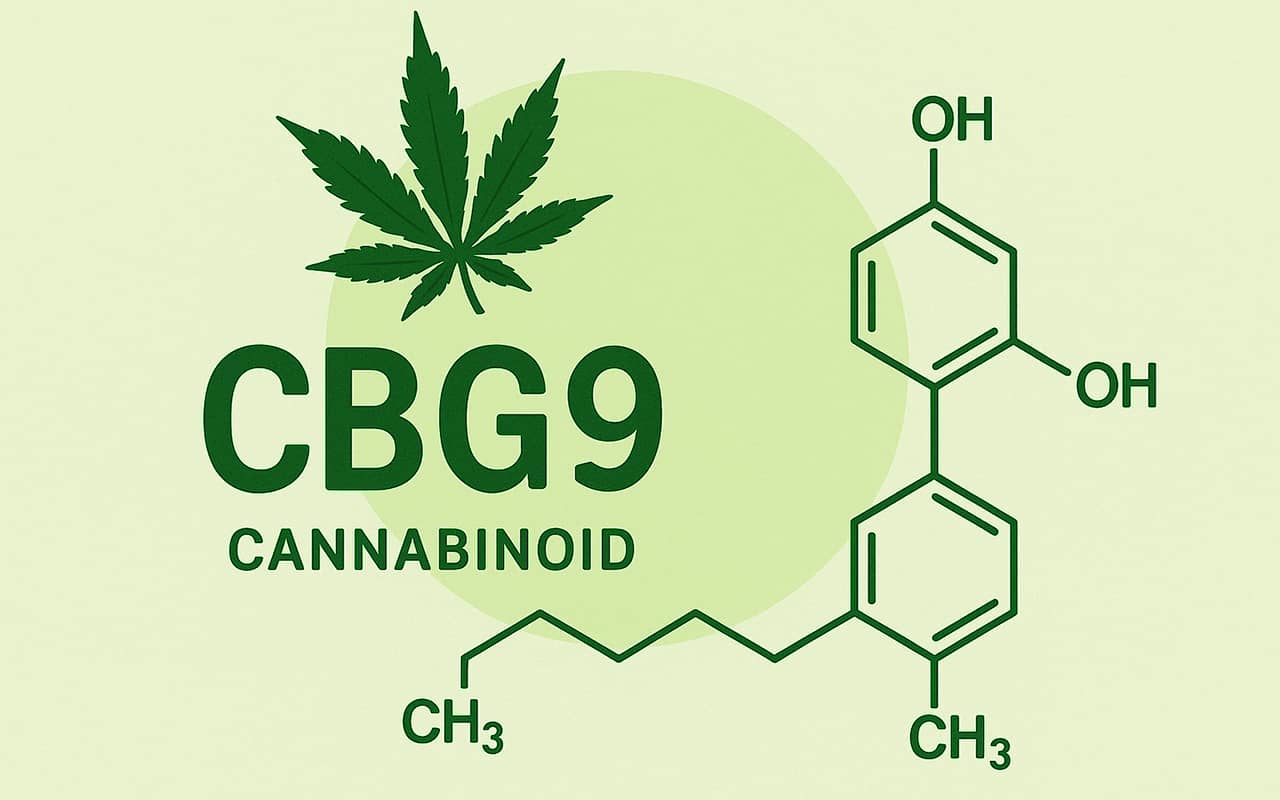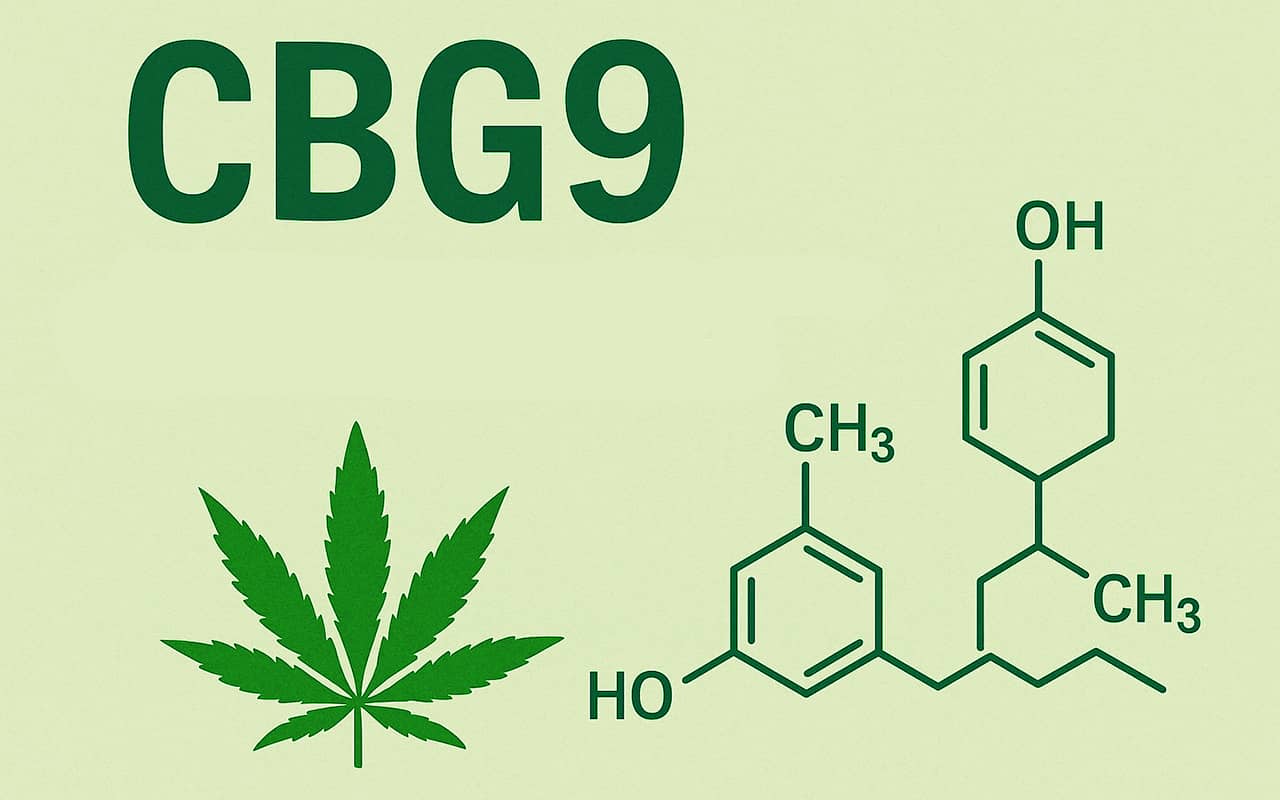There seems to be nothing in your cart.
Didn't find what you were looking for? Contact our consultant.
To save your shopping cart until your next visit, create an account or register .
Browse our Hits sales
There seems to be nothing in your cart.
Didn't find what you were looking for? Contact our consultant.
To save your shopping cart until your next visit, create an account or register .
Browse our Hits sales

Contents
The world of cannabis continues to evolve rapidly: scientists are discovering more and more new cannabinoids, expanding our understanding of their therapeutic potential. One of the latest discoveries is CBG9 (Cannabigerol-9) — a non-psychoactive cannabinoid that has already attracted the attention of researchers and the medical community. Its properties and possible effects on the body are still under study, but preliminary results suggest serious prospects for medical use.

CBG9, or Cannabigerol-9, is a newly identified cannabinoid derived from cannabis plants. Unlike the well-known CBD (Cannabidiol) and THC (Tetrahydrocannabinol), CBG9 has no psychoactive effect, making it an interesting subject for medical cannabis research.
Structurally, it is similar to CBD and CBG, but it has unique features that may explain its potential therapeutic properties. At present, CBG9 is being studied in preclinical research and has already shown significant results in the fields of anti-inflammatory therapy, pain relief, and neuroprotection.
In nature, the production of CBG9 is linked to cannabinoid biosynthesis in the cannabis plant. First, Cannabigerolic Acid (CBGA) is formed, from which CBG is derived. Then, under the influence of enzymes and environmental conditions, part of the CBG can transform into CBG9.
However, the concentrations of this compound in the plant are extremely small, which is why researchers are looking for new methods of obtaining it:
These methods may in the future make CBG9 more accessible for medicine and research.

Research has shown that CBG9 may possess a number of beneficial effects:
It is important to note that CBG9 has no psychoactive effect, unlike THC. This makes it especially attractive for cannabinoid-based therapies where the healing effect is desired without altering consciousness.
Thanks to its properties, CBG9 may find applications in the following areas:
CBG9 is a promising non-psychoactive cannabinoid that may play a key role in the future of medicine and pharmacology. Its anti-inflammatory, analgesic, neuroprotective, and antibacterial properties make it particularly valuable for treating conditions such as chronic pain, inflammatory diseases, neurological disorders, and infections. Unlike THC, CBG9 does not cause psychoactive effects, which broadens its therapeutic use and makes it safer for patients.
Of course, research is still in its early stages, and large-scale clinical trials on humans are needed for definitive conclusions. However, it is already clear that the discovery and study of CBG9 opens new horizons in cannabis research and lays the foundation for the creation of innovative drugs in the field of medical cannabis.
In the future, such new cannabinoids as CBG9 may become a key link in the fight against diseases where traditional medicine often proves ineffective.